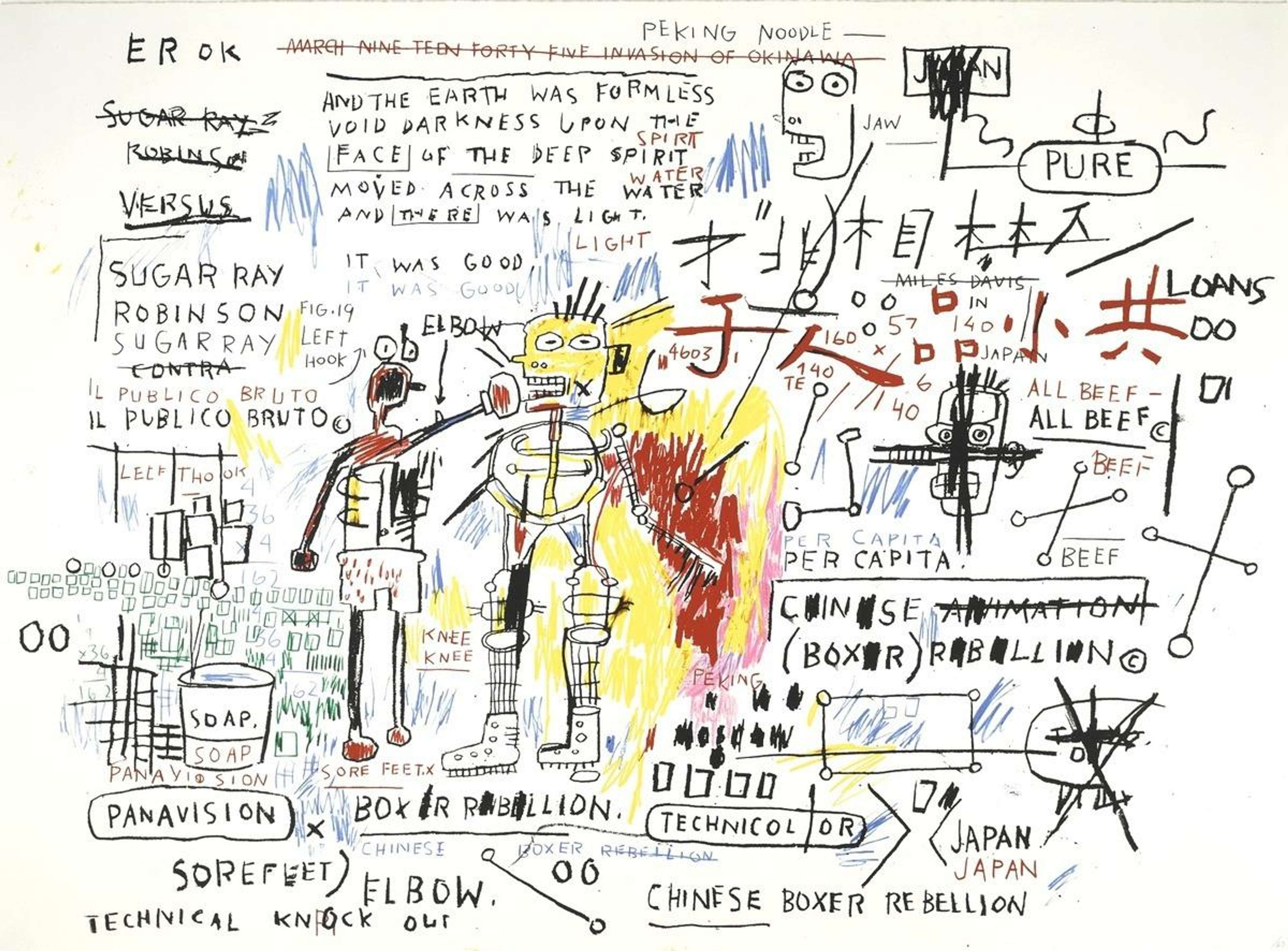
Boxer Rebellion

Boxer Rebellion
Unsigned Print
Jean-Michel Basquiat
£28,000-£40,000
$60,000-$80,000 Value Indicator
$50,000-$70,000 Value Indicator
¥260,000-¥380,000 Value Indicator
€30,000-€45,000 Value Indicator
$290,000-$410,000 Value Indicator
¥5,810,000-¥8,310,000 Value Indicator
$35,000-$50,000 Value Indicator
There aren't enough data points on this work for a comprehensive result. Please speak to a specialist by making an enquiry.
74 x 100cm, Edition of 60, Screenprint
Auction Results

Track auction value trend
Meaning & Analysis
Boxer Rebellion is a screen print in colours by Jean-Michel Basquiat from 1982. Basquiat revered Black icons of the boxing ring such as Sugar Ray Robinson, who this piece name-checks. Two boxers are loosely depicted at the centre of the image. Instead of depicting their anatomy, the style is cartoon-like, with the boxers appearing to be composed of robotic parts, giving them a heroic, futuristic veneer. Vibrant patches of red, yellow and blue emanate from the site of the punch inflicted by the figure on the left.
Not only is the doodle-like rendering of the boxers typical of Basquiat's self-consciously childlike drawing style, but it also suggests the influence of popular visual media of the era, reinforced by the text reading ‘TECHNICOLOR’. To this point, there is no doubt that the inspiration behind his depiction of human bodies far transcended the realm of the scholarly medical text Gray’s Anatomy. Leonhard Emmerling notes: “to his predilection for anatomic charts and love of children’s drawing style, Basquiat adds an occasional reliance on comic-book sources like Mad, Batman, Superman and Popeye. In no way does his painting try to disguise the many inspirations drawn unadulterated from television and the popular visual media.”